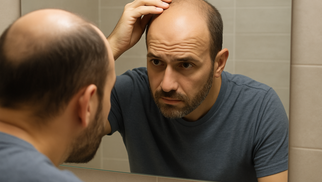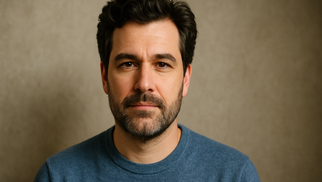Male Pattern Baldness: What You Can Do About It


Male pattern baldness, also known as androgenetic alopecia, is the most prevalent cause of hair loss among men worldwide. It is often viewed as an inevitable part of aging, but the reality is more complex. Genetics, hormones, and age all interact to influence how and when this type of hair loss develops. For many men, the psychological and social impact of losing hair can be just as significant as the physical changes. Fortunately, ongoing research and modern treatments provide more options than ever to slow progression and, in some cases, encourage regrowth.
This article explores male pattern baldness in depth — its causes, stages, and progression — while answering pressing questions such as whether regrowth is possible, what stage 1 means, and how treatment works. Special focus is given to Healpecia, a modern therapeutic option designed to address this condition.
What Exactly Is Male Pattern Baldness?
Male pattern baldness is a hereditary form of hair loss characterized by a receding hairline, thinning at the crown, or a combination of both. Over time, these patterns progress, often leading to partial or complete baldness. The condition is linked primarily to sensitivity of hair follicles to dihydrotestosterone (DHT), a derivative of testosterone.
When DHT binds to receptors in genetically susceptible follicles, the hair growth cycle shortens, the hairs become finer and thinner, and eventually, follicles stop producing visible hair altogether. Unlike other types of hair loss, androgenetic alopecia tends to follow a predictable pattern, which doctors classify using the Norwood-Hamilton scale.
When Does Baldness Begin and Does It Ever Stop?
The timeline varies greatly from person to person. Some men notice early signs as young as their late teens, while others maintain a full head of hair well into middle age.
In genetically predisposed men, the first signs can appear around 18–25 years, often as slight temple recession. By age 35, around two-thirds of men show some degree of thinning, and by 50, up to 85% experience noticeable baldness.
Unlike some conditions that resolve naturally, male pattern baldness rarely “stops” unless the follicles have fully miniaturized. In some men, progression plateaus at a moderate stage, while in others it continues steadily toward more advanced baldness.
The Very First Signs: Stage 1 Baldness
Stage 1 on the Norwood-Hamilton scale describes the earliest phase of androgenetic alopecia. At this stage:
- The hairline is essentially intact, with only minimal or no recession.
- Some men may notice a slightly higher forehead or subtle changes at the temples.
- The changes are often too subtle for others to notice.
Stage 1 is sometimes called the “pre-balding” stage. Because the follicles are still active, this is a crucial moment: early intervention can significantly slow or even reverse progression. Treatments started now are usually far more effective than those begun in later stages.
Is Regrowth Possible Once Hair Is Lost?
The possibility of regrowth depends on the condition of the follicles.
If follicles are miniaturized but not destroyed, treatments can stimulate them to grow thicker, stronger hairs again. This explains why many men see results from medications like finasteride and minoxidil. On the other hand, if follicles have been dormant for years and scarred over, regrowth is unlikely, and hair transplant surgery may be the only option.
Modern techniques such as platelet-rich plasma therapy and low-level laser therapy show promise in reviving weak follicles. While complete restoration is not guaranteed, many men achieve noticeable improvement with early and consistent treatment.
How Can Male Pattern Baldness Be Treated?
There is no universal cure, but several strategies can effectively manage hair loss.
Medical Options
Two FDA-approved treatments dominate: finasteride, which reduces DHT levels and slows follicle damage, and minoxidil, a topical solution that stimulates follicle activity and prolongs the growth cycle. Both require consistent use for lasting results.
Surgical Approaches
Hair transplant techniques such as follicular unit extraction (FUE) have advanced dramatically, creating natural-looking outcomes. Transplanted follicles, being resistant to DHT, generally continue growing for life.
Supportive Therapies
Stress management, proper nutrition, and scalp health all contribute to stronger hair. While these alone cannot reverse baldness, they support the effectiveness of medical treatments.
Newer Technologies
Laser devices, microneedling, and platelet-rich plasma therapy are increasingly popular. These modern therapies are not stand-alone cures but can enhance results when combined with established treatments.
Healpecia: A Modern Option for Hair Restoration
Among the newer therapeutic options, Healpecia stands out for its targeted approach to androgenetic alopecia.Unlike older medications that act in isolation, Healpecia combines anti-androgenic properties with follicle-stimulating effects.
It works by reducing DHT activity at the follicle level, stimulating dormant follicles, and enhancing scalp circulation. Clinical evaluations suggest Healpecia may slow miniaturization and improve hair density, particularly in men who begin treatment during earlier stages.
Non-invasive and designed for long-term use, Healpecia gives men an alternative or complementary choice alongside finasteride and minoxidil. While not a miracle cure, it strengthens the treatment arsenal and offers renewed hope for those dealing with thinning hair.
Beyond the Hair: The Emotional Side of Baldness
Hair loss is not just a cosmetic issue. For many men, baldness carries heavy emotional weight — feelings of premature aging, reduced attractiveness, or loss of identity.
Studies show that hair loss can contribute to lower self-esteem and even anxiety or depression. That is why treatment is not only about restoring hair but also about restoring confidence. Support from healthcare providers, counseling, or peer groups can make a major difference in helping men cope with the psychological side of baldness.
Living With and Managing Hair Loss Long-Term
Male pattern baldness is a chronic, progressive condition. Treatments can slow or improve hair loss but must usually be continued indefinitely. Consistency is the key: stopping therapy almost always leads to renewed shedding.
Combination therapy — such as pairing Healpecia with finasteride or using minoxidil alongside laser therapy — often delivers the best results. Regular follow-ups with specialists allow adjustments, minimize side effects, and track progress.
Men should approach treatment with realistic expectations. The goal is not necessarily to regain a full head of hair but to preserve, strengthen, and enhance what remains — improving appearance, self-image, and overall quality of life.
Final Thoughts: Taking Control of Your Hair Health
Male pattern baldness affects millions of men, but it does not have to mean surrendering to hair loss. From the earliest stage 1 signs to more advanced cases, modern science offers a wide range of solutions.
Whether through proven treatments like finasteride and minoxidil, advanced surgical options, or innovative therapies like Healpecia, men today have more control than ever over their hair health. Acting early, staying consistent, and seeking professional guidance can turn the tide against thinning hair.
At its core, treating male pattern baldness is not just about saving hair — it is about saving confidence, identity, and quality of life.
Drug Description Sources: U.S. National Library of Medicine, Drugs.com, WebMD, Mayo Clinic, RxList.
Reviewed and Referenced By:
Dr. Alan J. Bauman, MD Board-certified hair restoration physician and founder of Bauman Medical Hair Transplant Clinic. Widely cited in medical journals and health media for his expertise in androgenetic alopecia, hair transplant surgery, and regenerative therapies including PRP and low-level laser therapy.
Dr. Robert S. Bernstein, MD, FAAD Clinical Professor of Dermatology at Columbia University, pioneer in modern hair transplantation techniques including follicular unit extraction (FUE). His peer-reviewed work focuses on the classification, progression, and surgical treatment of male pattern baldness.
Dr. Jerry Shapiro, MD Internationally recognized dermatologist and professor at NYU Grossman School of Medicine specializing in hair disorders. Co-author of multiple textbooks on alopecia and a frequent contributor to the Journal of the AmericanAcademy of Dermatology (JAAD).
Dr. Nicole Rogers, MD, FAAD Board-certified dermatologist specializing in medical and surgical treatments for hair loss. Known for her clinical research on finasteride, minoxidil, and emerging therapies for androgenetic alopecia.
(Updated at Sep 28 / 2025)

